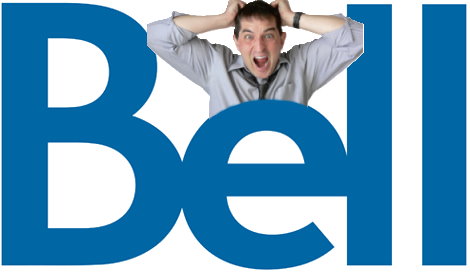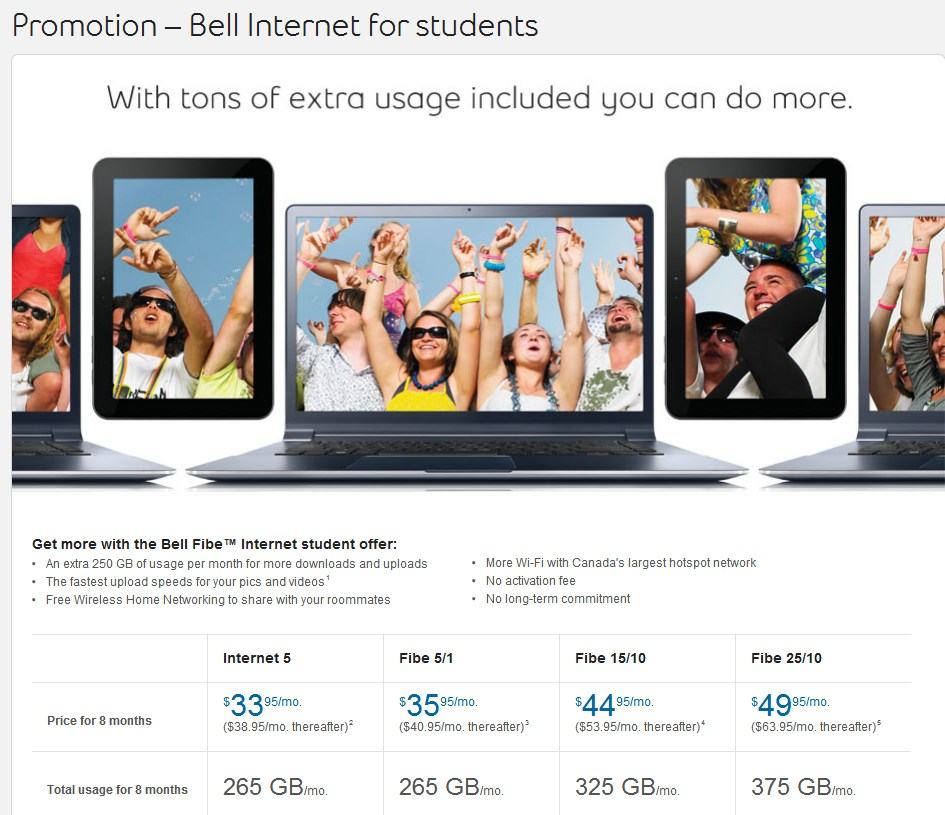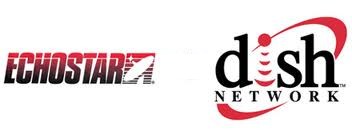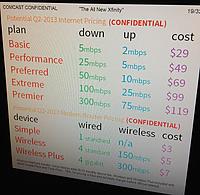It’s back to school season and Bell is teaching Canadian students a lesson in “bait and switch” broadband — pitching attractive broadband offers with generous usage allowances that evaporate when the school year ends.
Our regular Canadian reader Alex fills us in on the fine print (underlining ours):
The main lure is an extra 250GB of usage per month, but only for the first eight months. The activation fee and part of the monthly fee is also waived for the same amount of time.
Unfortunately, once the promotion expires (timed precisely after two college/university semesters are over), the price can increase by as much as $14 while the usage caps will be decreased by as much as 94%. Bell currently has a $25/month option to add 125GB. With or without it, the limit for usage based billing overlimit fees is $80.
Rogers usually launches a similar promotion for students, at similar prices. Back-to-school is also a competitive market for Canada’s cell phone companies.
 Upon closer examination, we found the devil is indeed in the details:
Upon closer examination, we found the devil is indeed in the details:
- Internet 5: After eight months, your Internet usage allowance takes five, dropping like a rock from 265GB to 15GB per month. Your overlimit fee is $2.50/GB, up to $80.
- Fibe 5/1: After school is out, you’ll wonder why you took this deal when your 265GB allowance gets slashed to 15GB per month. Same overlimit fee as above.
- Fibe 15/10: You better have a long summer vacation planned when your 325GB usage cap falls to 75GB a month. That’s speed you can’t really use with an overlimit fee of $2/GB, up to $80.
- Fibe 25/10: $50 a month should buy a lot, but after eight months your 375GB shrinks more than half — to 125GB a month with an overlimit fee of $1.50/GB, up to $80.
Openmedia.ca is recommending Canadians take their own permanent vacation from cable and phone company Internet Overcharging schemes and consider switching to one of several independent ISPs offering far better usage allowances or unlimited use plans. The consumer group has a website to help direct you to the providers serving your province. In their view, not doing business with the bait and switch providers will send them a message they have to do better to compete for your business.


 Subscribe
Subscribe








